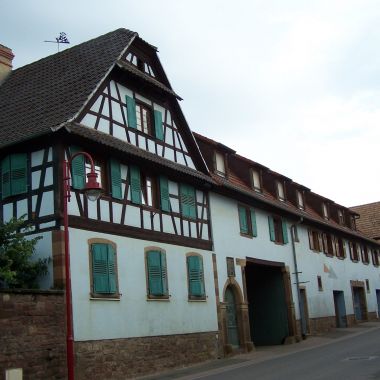Description

Archaeological excavations at the Heuberg site have confirmed the age of occupation of the site. As early as 5000 BC hunter-breeders were established on this height. Ribboned pottery and bones of domestic animals were found there. Other elements of the later Neolithic period were discovered here.
For an unknown reason, the bishopric lost the village property, which after being lent to the "Puller" von Hohenburg passed in the 16th century to the d'Andlau family who introduced the Reformation in 1526 and lived in the castle then located near the church. Today's bell tower is believed to be located on the site of the former keep. Of the seigneurial residence only the tithe barn remains.
The numerous and imposing 18th century farmhouses bear witness to an obvious prosperity. Many traditional farmhouse names (Hofname) confirm this. In the 19th century, there were three rapeseed oil mills, a mustard mill and two tile mills.
-
From 01/01/2025 to 31/12/2025Monday from 08:00 to 18:00Tuesday from 08:00 to 18:00Wednesday from 08:00 to 18:00Thursday from 08:00 to 18:00Friday from 08:00 to 18:00Saturday from 08:00 to 18:00Sunday from 08:00 to 18:00
More information
-
From 01/01/2025 to 31/12/2025Monday from 08:00 to 18:00Tuesday from 08:00 to 18:00Wednesday from 08:00 to 18:00Thursday from 08:00 to 18:00Friday from 08:00 to 18:00Saturday from 08:00 to 18:00Sunday from 08:00 to 18:00
Access
3 place de la mairie
- mairie
67370 Pfulgriesheim











